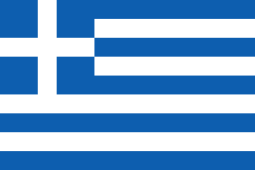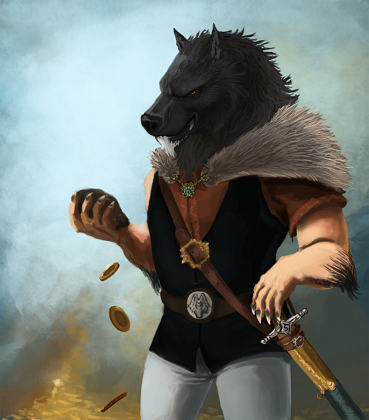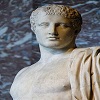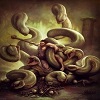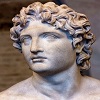Kynokephaloi
Dog-faced men
We live in a world where movies and books bring the most unbelievable ideas to life for us; in some cases, through a strong sense of imagination and in other cases, through ever-evolving-and-improving CGI technology.
We love that kind of stuff, we THRIVE on it! And the weirder, usually the better! Well, if you’ve ever read anything related to Greek mythology, you know that the ancient Greeks were right there with us in their massive catalog of odd, strange, magical and supernatural beings and creatures, many of which would be right at home on the big screen or in the pages of a really detailed modern novel.
Monsters were just as much a thing for them as they are for us, and one of the ones that gets squeezed through the cracks more often than not in Greek mythology is a race of being known as the KYNOKEPHALOI (or in modern pronunciation, CYNOCEPHALI – “Sigh-no-sef-a-lee”), who could only be described as half-man, half-dog, and a very heated debate over who and what they actually were (starting in ancient times all the way through the medieval European era!).
Heck, they weren’t even completely Greek and are claimed by other cultures as well!
The Cynocephali sported the body of a human, but rather than a normal human head, the creature in question had the head of a dog. So, jokingly, in this case, they’d be their own “best friend!” Bad jokes aside, the Cynocephali were, despite being the probable ancestors to the modern-day werewolf tales that you might read about.
Even stranger is the fact that the Greeks seemed to really believe that these creatures were real live “neighbors!” Back when the Greeks were at their best, somewhere about 400 B.C. , people were trying to make sense of the Cynocephali spoken of in the myths and legends.
One physician, who documented nature wherever he happened to go (“doctors” back then were kind of like the first scientists, recording much of what they saw in nature and trying to explain it as best they could without all the modern tech we use today…), a guy by the name of Ctesias, wrote a whole ton on the Cymocephali, and claimed to have witnessed whole tribes of them in his travels to far-off India. Odds are this tale was full of baloney, as many times, explorers would make up fantastical tales to impress people back home, but perhaps not!
More reasonably, Ctesias probably saw an animal he was unfamiliar with in his journeys, such as a baboon, and tried to work it out as best he could. Wonky as they may have been, his descriptions were pretty detailed and reasonable to someone who was reading thm. Here’s what he wrote:
“They speak no language, but bark like dogs, and in this manner make themselves understood by each other. Their teeth are larger than those of dogs, their nails like those of these animals, but longer and rounder. They inhabit the mountains as far as the river Indus. Their complexion is swarthy. They are extremely just, like the rest of the Indians with whom they associate. They understand the Indian language but are unable to converse, only barking or making signs with their hands and fingers by way of reply... They live on raw meat.
They number about 120,000. The Cynocephali living on the mountains do not practice any trade but live by hunting. When they have killed an animal they roast it in the sun. They also rear numbers of sheep, goats, and asses, drinking the milk of the sheep and whey made from it. They eat the fruit of the Siptakhora, whence amber is procured, since it is sweet. They also dry it and keep it in baskets, as the Greeks keep their dried grapes.
They make rafts which they load with this fruit together with well-cleaned purple flowers and 260 talents of amber, with the same quantity of the purple dye, and thousand additional talents of amber, which they send annually to the king of India. "They exchange the rest for bread, flour, and cotton stuffs with the Indians, from whom they also buy swords for hunting wild beasts, bows, and arrows, being very skillful in drawing the bow and hurling the spear.
They cannot be defeated in war, since they inhabit lofty and inaccessible mountains. Every five years the king sends them a present of 300,000 bows, as many spears, 120,000 shields, and 50,000 swords. They do not live in houses, but in caves. They set out for the chase with bows and spears, and as they are very swift of foot, they pursue and soon overtake their quarry. The women have a bath once a month, the men do not have a bath at all, but only wash their hands. They anoint themselves three times a month with oil made from milk and wipe themselves with skins.
The clothes of men and women alike are not skins with the hair on, but skins tanned and very fine. The richest wear linen clothes, but they are few in number. They have no beds, but sleep on leaves or grass. He who possesses the greatest number of sheep is considered the richest, and so in regard to their other possessions. All, both men and women, have tails above their hips, like dogs, but longer and more hairy. They are just, and live longer than any other men, 170, sometimes 200 years."
So, civilized dog-people living like the regular folks of those times would have, with a few differences. Doesn’t sound too bad! Ctesias’ account of the Cynocephali was generally pretty positive, yet others left behind records that paint them as a more vicious and troublesome creature, definitely a group to be avoided if you valued your limbs attached to your body. Some mentioned them as cannibals who had no problem ripping into a lonely wanderer who might stray into their territory, with little to no trace of civilization in their veins.
The more vicious side of the creatures (or at least one of their tribes) was documented in the story if Jason and the Argonauts, who, in their quest for the Golden Fleece about their ship, the Argo, came across a group of Cynocephali…who were not welcoming and who had less-than-friendly attitudes. The battle between the Argonauts and Cynocephali ended up in a win for the traveling adventurers, but it put the vision of the dog-faced humans as brutal foes in peoples’ minds.
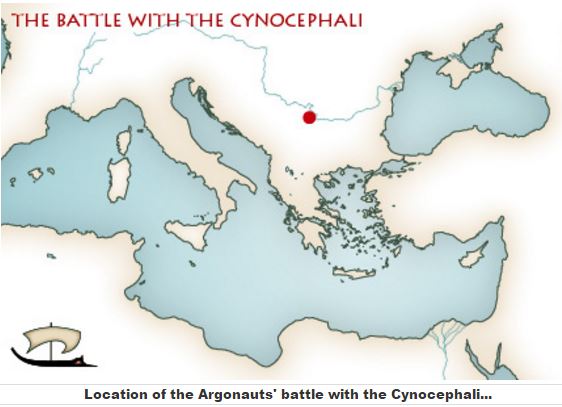
The Cynocephali didn’t belong to the Greeks alone and were well-known far beyond Greece, with different names, but with very similar characteristics. They were documented in Egypt (the gods Hapi and Anubis were shown to have the faces of dogs, as well as a sacred animal that had the face of a dog and a body of a baboon.), and were also a part of the tales of ancient China that described the citizens of a mythical continent called Fusang. Fusang was rumored to be across the Pacific Ocean where North America rests today.
According to a Buddhist missionary named Hui-Sheng, an island of dog-headed men lived on an island to the east of Fusang. Later on, in a Tang dynasty travel-tale that came much later in Chinese history, historians talked about a “dog kingdom.”
In medieval Europe, a Catholic church official named Paul the Deacon described the Cynocephali as beings that kings would include in their armies, saying that “these men wage war obstinately, drink human blood and quaff their own gore if they cannot reach the foe."
That story, while a cool idea for a really good legend, was probably nothing more than a scare tactic to scare the crud out of the enemy of Paul’s own king. The French writer of a medieval encyclopedia called the Liber de Monstruosis Hominibus Orientis, xiv, ("Book of Monstrous Men of the Orient") named Thomas of Cantimpré described the Cynocephali as "an animal with the head of the dog but with all other members of human appearance…though he behaves like a man… and, when peaceful, he is tender like a man, when furious, he becomes cruel and retaliates on humankind."
Medieval travelers such as Giovanni da Pian del Carpine and even Marco Polo both talked about Cynocephali in the journals they kept on their adventures. Del Carpine wrote about the armies of Ogedei Khan (ruler of the Mongols), who fought a race of “dog-heads” who lived north of Lake Baikal, a large lake in what is today eastern Russia. Marco Polo's journal discussed “dog-headed barbarians” on an island called Angamanain, or what are today called the Andaman Islands. Ol’ Marco was looking for spices to bring home and sell for huge bank, and according to him, it was the Cynocephali who grew it. Apparently, they really weren’t too cool on selling it however, because Marco described them as cruel and "just like big mastiff dogs.”
So, were the Cynocephali real? Are they still real? According to many tales told over the years, quite a few people believed that they were. In the here-and-now, they are STILL sighted now and again, just like other mythical beings like vampires, werewolves and even Bigfoot-like creatures. All the time, the world is getting smaller, with fewer places for such a creature to exist unknown and unseen. While it’s probably a good bet that the Cynocephali are nothing more than a rather interesting and bizarre footnote in mythological history, you just never know. When you least expect it, out for a hike in the deep woods, one might just pop up and introduce itself!
[1]

